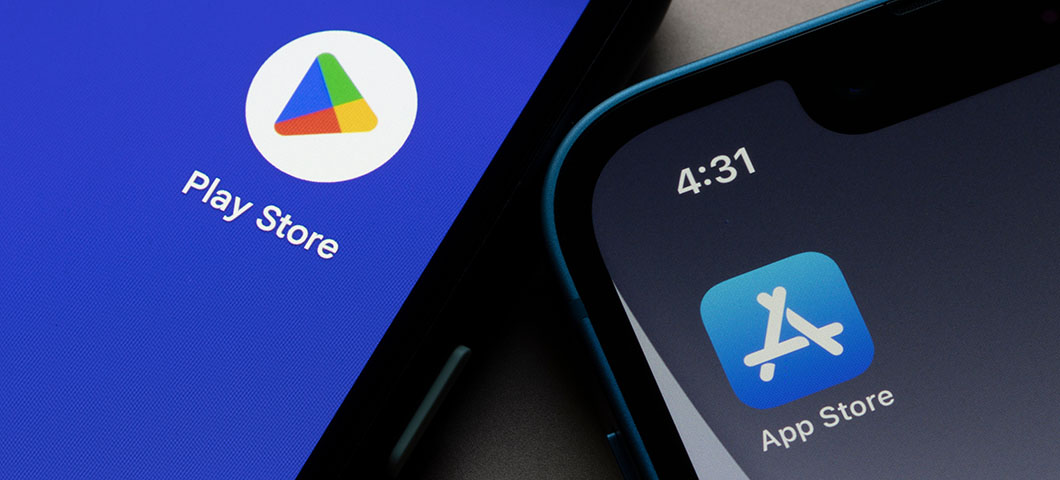
How to Choose the Best Ad Platform for Your Business Goals in 2024
As businesses navigate the complexities of digital marketing, choosing an ad platform can make or break a campaign’s success. In a landscape where consumers are more connected than ever, reaching the right audience through the right channel is paramount.
The numbers speak for themselves: with billions of users spread across various platforms, the potential for targeted marketing has never been greater. But with this opportunity comes the challenge of selecting the ad platform that best aligns with your business goals. Whether your objective is to increase brand awareness, generate leads, drive sales, or boost engagement, understanding the unique strengths of each platform category is crucial.
In this blog, we’ll break down the major ad platforms into categories—search engines, social media, app stores, and more—providing you with the insights needed to make informed decisions. By meeting your audience where they are, you can optimize your ad spend, maximize your return on investment, and set the stage for campaign success in 2024.
In the vast digital advertising ecosystem, not all platforms are created equal. Each platform offers unique advantages, and understanding these distinctions is key to choosing the right one for your business goals.
Understanding Different Ad Platforms
Search Engine Ad Platforms

Search engines remain a cornerstone of digital advertising, with Google Ads leading the charge. With over 8.5 billion searches conducted daily, Google Ads provides unparalleled access to intent-driven users actively searching for products or services. Whether you’re a small business or a global brand, the platform’s robust targeting options and vast reach make it a go-to for capturing leads and driving conversions.
For businesses looking to diversify, Bing Ads offers a compelling alternative. While it may not have the same market share as Google, Bing Ads reaches a unique audience, often at a lower cost-per-click, making it an attractive option for specific demographics.
Social Media Ad Platforms
Facebook Ads remains a dominant force with its billion-plus active users, providing extensive targeting options and versatile ad formats, from image and video ads to dynamic product ads. It’s an ideal platform for businesses aiming to build awareness, drive conversions, and engage with a wide audience.
Instagram excels in visual storytelling, allowing brands to captivate users through eye-catching photo and video content. Its focus on aesthetics makes it perfect for brands that prioritize strong visual identity and creative engagement.
TikTok Ads has quickly become a favorite among younger demographics, offering brands a platform for short-form, engaging videos that capture attention. TikTok’s algorithm helps content go viral, providing a unique opportunity for brands to build awareness and foster community engagement.
X (formerly Twitter) Ads is all about real-time engagement. With its focus on trending topics and conversational marketing, X Ads are well-suited for brands looking to tap into current events, run time-sensitive promotions, or engage with audiences through concise, impactful messages.
Pinterest Ads offer a visual discovery engine where users actively seek inspiration. With over 400 million monthly active users, Pinterest is an ideal platform for businesses in fashion, home decor, and DIY, where users are primed to discover and act on new ideas. Pinterest’s unique ad formats, such as Promoted Pins and Shopping Ads, help brands connect with consumers at the inspiration phase of their buying journey.
Snapchat Ads cater to a younger, mobile-first audience. With innovative ad formats like Snap Ads, Story Ads, and Augmented Reality (AR) Lenses, Snapchat offers brands a way to engage users in a fun, interactive environment. The platform’s focus on immersive, camera-first experiences makes it an excellent choice for brands looking to connect with Gen Z and Millennials.
LinkedIn Ads remains the go-to platform for B2B marketing. It offers precise targeting based on job titles, industries, and professional interests. It’s particularly effective for businesses looking to reach decision-makers and professionals in specific industries.
App Store Ad Platforms

For businesses with a mobile app, app store advertising is a critical component of their marketing strategy. Apple Search Ads allows you to target users directly within the App Store, ensuring your app is visible to users actively searching for similar products. This platform is particularly effective for driving app installs and increasing user acquisition.
Similarly, Google Play Ads enables you to promote your app to millions of Android users. By leveraging Google’s vast network, you can reach potential users across Google Play and beyond, making it easier to drive app downloads and engagement.
Video and Display Ad Platforms
As video content continues to dominate online consumption, platforms like YouTube Ads offer a powerful way to engage with audiences through compelling visual storytelling. Whether through skippable in-stream ads, bumper ads, or discovery ads, YouTube allows brands to reach users with high-impact video content tailored to their interests.
Programmatic display ads offer automated ad placement across a vast network of sites for those looking to expand their reach beyond specific websites. This approach leverages real-time bidding to deliver highly targeted display ads to your desired audience, maximizing reach and relevance.
Aligning Ad Platforms with Business Goals
Choosing the right ad platform is not just about where your audience is—it’s about aligning the platform’s strengths with your business goals. Whether your objective is brand awareness, lead generation, sales, or customer engagement, the right platform can make all the difference.
Brand Awareness
Platforms with broad reach and high user engagement are key for businesses focused on increasing brand visibility. Facebook Ads and Instagram Ads excel in this area, offering extensive reach across diverse demographics. Their advanced targeting options, coupled with visually driven ad formats, allow brands to tell their stories effectively.
YouTube Ads and TikTok Ads are powerful tools for brand awareness, mainly when video content is central to your strategy. These platforms thrive on high-impact visual content that quickly captures attention and leaves a lasting impression.
Lead Generation
If your primary goal is lead generation, platforms that offer robust targeting and data-driven optimization are essential. Google Ads stands out with its ability to capture intent-driven leads through search ads. At the same time, LinkedIn Ads is ideal for B2B companies targeting professionals based on specific job titles or industries.
X Ads also plays a significant role in lead generation, particularly for time-sensitive campaigns that capitalize on trending topics and real-time engagement.
Sales and Conversions
Driving sales requires platforms that can reach users at the decision-making stage. Google Ads remains a top choice with its direct-response capabilities, allowing you to target users who are searching for specific products or services. Pinterest Ads are also effective, especially for businesses in industries like fashion, home decor, and beauty, where users are primed to make purchase decisions based on visual inspiration.
App Store Ads (Apple Search Ads and Google Play Ads) are critical for driving app installs and purchases, particularly for mobile-first businesses. These platforms allow you to reach users actively searching for apps similar to yours, increasing the likelihood of conversions.
Customer Engagement
Engagement is all about interaction, and platforms like Instagram, Snapchat, and TikTok are at the forefront of fostering user engagement through creative, interactive content. Snapchat’s AR Lenses and TikTok’s viral video formats encourage users to participate, share, and engage with brands in a fun and immersive way.
X Ads also drives engagement, allowing brands to interact with users in real-time, respond to feedback, and participate in ongoing conversations that matter to their audience.
Measuring Success: Key Performance Indicators (KPIs) to Track
Once you’ve chosen the right ad platform, measuring your success is crucial to understanding the effectiveness of your campaigns. Each platform offers unique metrics that can help you gauge performance and refine your strategy.
Brand Awareness Metrics

For campaigns focused on brand awareness, metrics like reach, impressions, and brand lift are essential. Platforms like Facebook and YouTube provide detailed analytics on how many users saw your ad and the frequency of those views.
Video completion rates on platforms like YouTube and TikTok are also key indicators of how engaging your content is. High completion rates suggest that your video content resonates with viewers and holds their attention.
Lead Generation Metrics
When evaluating lead generation efforts, click-through rate (CTR) and conversion rate are critical. CTR measures the percentage of users who clicked on your ad after seeing it, indicating the effectiveness of your ad copy and creativity. The conversion rate tracks how many clicks led to meaningful actions, like form submissions or product inquiries.
Tracking cost per lead (CPL) is also vital on platforms like Google Ads. This metric helps you understand how much you’re spending to acquire a new lead, enabling you to optimize your budget and bidding strategy.
Sales and Conversion Metrics
For sales-driven campaigns, return on ad spend (ROAS) is the gold standard. ROAS measures the revenue generated for every dollar spent on advertising, giving you a clear picture of your campaign’s profitability. On platforms like Google Ads and Pinterest, tracking conversion value can also provide insights into the total revenue generated from your ads.
For app-specific campaigns, tracking cost per install (CPI) and in-app purchases is crucial to understanding the impact of your ads on driving app downloads and revenue.
Engagement Metrics
Regarding engagement, metrics like likes, shares, comments, and engagement rate provide insights into how users interact with your content. Platforms like Instagram, Snapchat, and TikTok offer detailed analytics on user interactions, helping you gauge the effectiveness of your creative content.
For real-time platforms like X, tracking mentions, replies, and retweets can show how well your brand is resonating with the audience and participating in relevant conversations.
Choosing the Right Platform for Long-Term Success

Selecting the right ad platform is critical in achieving your business goals in 2024. By understanding each platform’s unique strengths and aligning them with your objectives—whether it’s building brand awareness, generating leads, driving sales, or fostering engagement—you can create a targeted, effective advertising strategy that drives real results.
The digital advertising landscape constantly evolves, and staying ahead of the curve requires more than just knowledge—it demands strategic expertise and ongoing optimization. That’s where evōk comes in.
With our deep understanding of the latest trends and platform capabilities, we’re here to help you navigate the complexities of digital marketing and unlock your brand’s full potential.
Contact us today and get connected to a team of experts dedicated to maximizing your return on investment and ensuring your campaigns are always one step ahead of the competition.